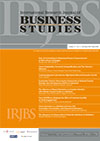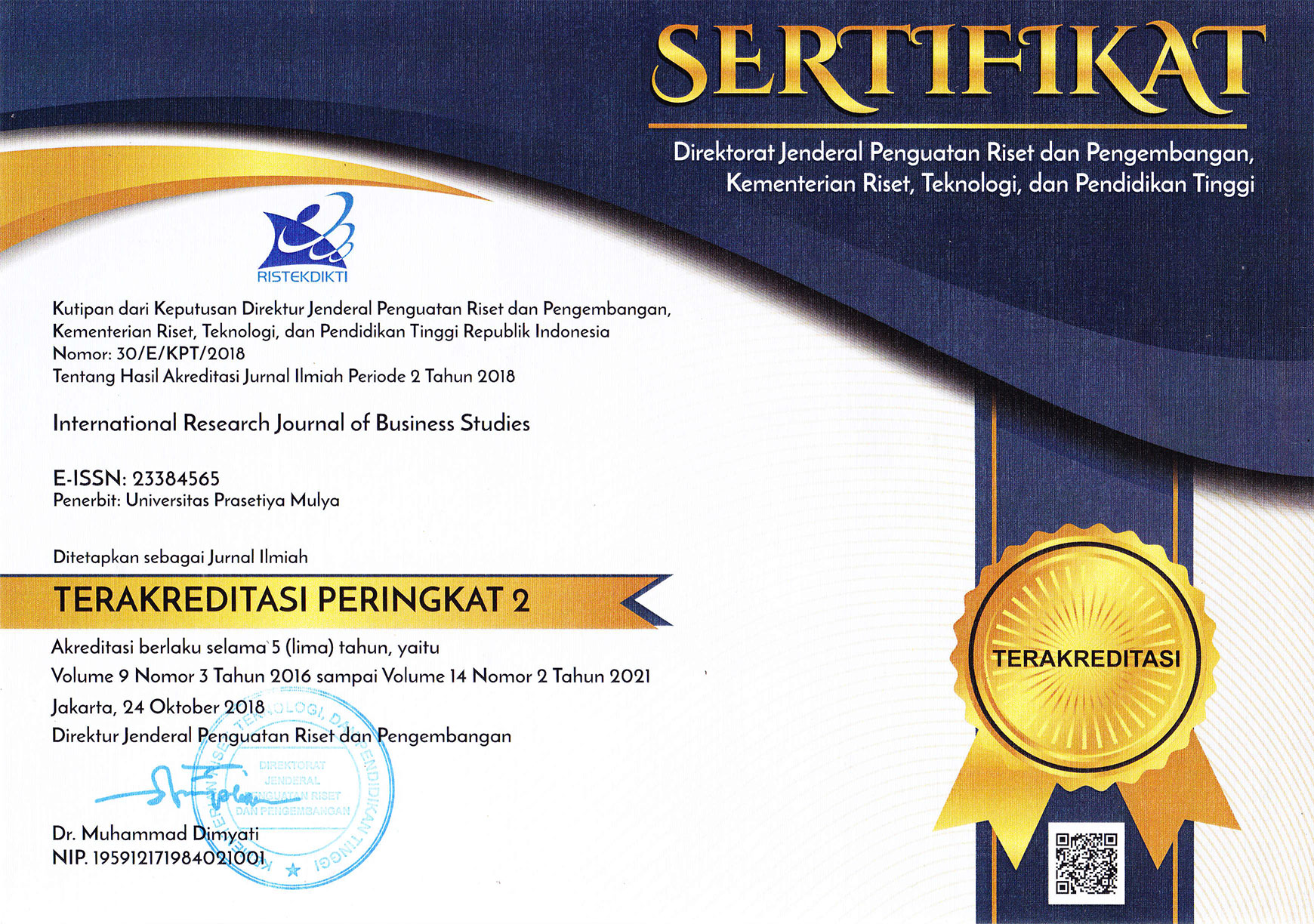Role of Femvertising in Enhancing Women’s Empowerment in FMCG Brand Campaigns
DOI:
https://doi.org/10.21632/irjbs.17.3.213-223Keywords:
Femvertising, Women Empowerment, Self-Efficacy, Gender role equalityAbstract
Advertisements that endorse and empower women and girls are referred to as “Femvertising”. These advertisements frequently defy stereotypes and portray women in powerful and competent roles. The study explored the contribution of Femvertising in women’s empowerment. This empirical study aimed to look at three key indicators of women’s empowerment: Autonomy, Self-efficacy, and Gender role equality exhibited in advertisement campaigns. The three brands chosen for analysing these three indicators were Hamam, Horlicks and Vim. Data was gathered through a structured questionnaire from 188 respondents. The study found that self-efficacy significantly influences perceived women’s empowerment. Gender role equality attitude varied with the Educational attainment. Additionally, self-efficacy partially mediated the relationship between gender role equality and perceived women’s empowerment, while autonomy moderated the link between self-efficacy and gender role equality, with high autonomy weakening the association. These results underscore Femvertising's potential to reshape societal perceptions and promote women's empowerment through empowering commercials.
References
Abitbol, A., & Sternadori, M. (2019). Championing Women’s Empowerment as a Catalyst for Purchase Intentions: Testing the Mediating Roles of OPRs and Brand Loyalty in the Context of Femvertising. International Journal of Strategic Communication, 13(1), 22–41. https://doi.org/10.1080/1553118X.2018.1552963
Aboufaddan, H., & Abdel-Salam, D. (2019). Women’s Autonomy in Decision Making in Rural Village in Assiut Governorate.
Al-Qahtani, A. M., Ibrahim, H. A., Elgzar, W. T., El Sayed, H. A., & Essa, R. M. (2021). The role of self-esteem and self-efficacy in women empowerment in the Kingdom of Saudi Arabia: A cross-sectional study. African Journal of Reproductive Health, 25(1), 69–78.
Al-Rashdi, N. A. S., & Abdelwahed, N. A. A. (2022). The Empowerment of Saudi Arabian Women through a Multidimensional Approach: The Mediating Roles of Self-Efficacy and Family Support. Sustainability, 14(24), 16349.
Bali Swain, R., & Wallentin, F. Y. (2012). Factors empowering women in Indian self-help group programs. International Review of Applied Economics, 26(4), 425–444. https://doi.org/10.1080/02692171.2011.595398
Banerjee, S. (2015). Determinants of Female Autonomy across Indian States. Journal of Economics, Business and Management, 3. https://doi.org/10.7763/JOEBM.2015.V3.330
Bansal, K. (2021). THE ROLE OF EDUCATION IN GENDER EQUALITY IN INDIA. International Journal of Education.
Belingheri, P., Chiarello, F., Fronzetti Colladon, A., & Rovelli, P. (2021). Twenty years of gender equality research: A scoping review based on a new semantic indicator. PLoS ONE, 16(9), e0256474. https://doi.org/10.1371/journal.pone.0256474
Berlin, S., & Johnson, C. G. (1989). Women and autonomy: Using structural analysis of social behavior to find autonomy within connections. Psychiatry, 52 1, 79–95. https://doi.org/10.1080/00332747.1989.11024431
Bujang, M. A., Omar, E. D., & Baharum, N. A. (2018). A Review on Sample Size Determination for Cronbach’s Alpha Test: A Simple Guide for Researchers. The Malaysian Journal of Medical Sciences : MJMS, 25(6), 85–99. https://doi.org/10.21315/mjms2018.25.6.9
Chen, D. H. (2004). Gender equality and economic development. World Bank Policy Research Working Paper, 3285. https://www.academia.edu/download/47230260/WPS3285.pdf
Chen, H., Peng, X., Xu, X., & Yin, Y. (2020). The effect of gender role attitudes on the self-efficacy of the older adults: Based on data from the third wave Survey of Chinese Women’s social status. Asia Pacific Journal of Social Work and Development, 30(4), 273–287. https://doi.org/10.1080/02185385.2020.1744478
Chetia, B. (2021). role of education in gender equality—Google Search. https://www.google.com/search?q=role+of+education+in+gender+equality&rlz=1C5CHFA_enIN1037IN1037&oq=role+of+education+in+gen&gs_lcrp=EgZjaHJvbWUqBwgAEAAYgAQyBwgAEAAYgAQyBggBEEUYOTIHCAIQABiABDIHCAMQABiABDIHCAQQABiABDIHCAUQABiABDIHCAYQABiABDIHCAcQABiABDIICAgQABgWGB4yCAgJEAAYFhgeqAIAsAIA&sourceid=chrome&ie=UTF-8#ip=1
de Hoop, T., Peterman, A., & Anderson, L. (2020). Guide for measuring women’s empowerment and economic outcomes in impact evaluations of women’s groups—Google Search. https://www.google.com/search?q=Guide+for+measuring+women%27s+empowerment+and+economic+outcomes+in+impact+evaluations+of+women%27s+groups&rlz=1C5CHFA_enIN1037IN1037&oq=Guide+for+measuring+women%27s+empowerment+and+economic+outcomes+in+impact+evaluations+of+women%27s+groups&gs_lcrp=EgZjaHJvbWUyBggAEEUYOdIBBzI2MWowajeoAgCwAgA&sourceid=chrome&ie=UTF-8
Gecas, V. (1989). The Social Psychology of Self-Efficacy. Review of Sociology, 15, 291–316. https://doi.org/10.1146/ANNUREV.SO.15.080189.001451
Ghasemi, M., Badsar, M., Falahati, L., & Karamidehkordi, E. (2019). Investigating the mediating role of self-esteem and self-efficacy in analysis of the socio-cultural factors influencing rural women’s empowerment. Women’s Studies Sociological and Psychological, 17(2), 151–186.
Hollander, J. A. (2010). Why Do Women Take Self-Defense Classes? Violence Against Women, 16(4), 459–478. https://doi.org/10.1177/1077801210364029
Hossain, T. (2018). Empowering women through e-business: A study on women entrepreneurs in Dhaka City. Asian Business Review, 8(3), 21–160.
Jamil, M., & Bukhari, K. (2020). Intergenerational Comparison of Women Empowerment and its Determinants. https://www.researchgate.net/profile/Muhammad-Jamil-24/publication/349295311_Intergenerational_Comparison_of_Women_Empowerment_and_its_Determinants/links/60289aca4585158939a2545d/Intergenerational-Comparison-of-Women-Empowerment-and-its-Determinants.pdf
Jeckoniah, J. N., Nombo, C. N., & Mdoe, N. S. Y. (2012). Women empowerment in agricultural value chains: Voices from onion growers in northern tanzania. http://suaire.suanet.ac.tz/handle/123456789/2267
Kapoor, D., & Munjal, A. (2019). Self-consciousness and emotions driving femvertising: A path analysis of women’s attitude towards femvertising, forwarding intention and purchase intention. Journal of Marketing Communications, 25(2), 137–157. https://doi.org/10.1080/13527266.2017.1338611
Keshet, Y., & Simchai, D. (2014). The ‘gender puzzle’of alternative medicine and holistic spirituality: A literature review. Social Science & Medicine, 113, 77–86.
Kishor, S. (1995). autonomy and egyptian women findings from the 1988—Google Search. https://www.google.com/search?q=autonomy+and+egyptian+women+findings+from+the+1988&rlz=1C5CHFA_enIN1037IN1037&oq=autonomy+and+egyptian+women+findings+from+the+1988&gs_lcrp=EgZjaHJvbWUyBggAEEUYOdIBCDY4NzJqMGo3qAIAsAIA&sourceid=chrome&ie=UTF-8
Kitterød, R. H., & Nadim, M. (2020). Embracing gender equality. Demographic Research, 42, 411–440.
Kılıç, S. (2016). Cronbach’s alpha reliability coefficient -. Journal of Mood Disorders, 6. https://doi.org/10.5455/JMOOD.20160307122823
Kshirsagar, S., Barmase, S., Jadhav, K., Thokal, P., Shaikh, T., Sawant, S., Shukla, K., Pookandy, A., Gavandha, M., & Chavan, P. (2019). An Experimental Study to Assess the Effectiveness of Self-defense Training among Nursing Students, their Knowledge and Practices in Selected Nursing Institute of Mumbai City. https://www.academia.edu/download/71368060/424706198_02_IJNMI-03-AJ-2019-13.pdf
Nisser, A. H. I., & Ayedh, A. M. A. (2017). Microfinance and women’s empowerment in Egypt. International Journal of Business and Economic Affairs, 2(1). http://ijbea.com/ojs/index.php/ijbea/article/download/48/39
Patel, V., Patel, S., & Patel, P. K. (2022). Women autonomy and its sociodemographic correlates in high focus states of India. International Journal Of Community Medicine And Public Health. https://doi.org/10.18203/2394-6040.ijcmph20221755
Pérez, M. P. R., & Gutiérrez, M. (2017). Femvertising: Female empowering strategies in recent spanish commercials. Investigaciones Feministas, 8(2), 337–351.
Rajvanshi, A. (2017). Women entrepreneurs in India: Challenges and opportunities. IOSR Journal of Humanities and Social Sciences, 22(4), 1–9.
Riaz, S., & Pervaiz, Z. (2018). The impact of women’s education and employment on their empowerment: An empirical evidence from household level survey. Quality & Quantity, 52, 2855–2870.
Sheilds, L. E. (1995). Women’s Experiences of the Meaning of Empowerment. Qualitative Health Research, 5(1), 15–35. https://doi.org/10.1177/104973239500500103
Sherer, M., Maddux, J. E., Mercandante, B., Prentice-Dunn, S., Jacobs, B., & Rogers, R. (1982). The Self-Efficacy Scale: Construction and Validation. Psychological Reports, 51, 663–671. https://doi.org/10.2466/pr0.1982.51.2.663
Shooshtari, S., Abedi, M. R., Bahrami, M., & Samouei, R. (2018). Empowerment of women and mental health improvement with a preventive approach. Journal of Education and Health Promotion, 7. https://www.ncbi.nlm.nih.gov/pmc/articles/PMC5852985/
Shuja, K. H., Aqeel, M., & Khan, K. R. (2020). Psychometric development and validation of attitude rating scale towards women empowerment: Across male and female university population in Pakistan. International Journal of Human Rights in Healthcare, 13(5), 405–420.
Soni, P. (2020). The Portrayal of Women in Advertising. International Journal of Engineering and Management Research. https://papers.ssrn.com/sol3/papers.cfm?abstract_id=3669583
Spence, J. T., Helmreich, R., & Stapp, J. (1973). A short version of the Attitudes toward Women Scale (AWS). Bulletin of the Psychonomic Society, 2(4), 219–220. https://doi.org/10.3758/BF03329252
Török, A. (2022). The Perceived Empowering And Brand-related Effects Of Femvertising. https://doi.org/10.14267/phd.2023005
Tsai, W.-H. S., Shata, A., & Tian, S. (2021). En-Gendering Power and Empowerment in Advertising: A Content Analysis. Journal of Current Issues & Research in Advertising, 42(1), 19–33. https://doi.org/10.1080/10641734.2019.1687057
Varghese, N., & Kumar, N. (2020). Feminism in advertising: Irony or revolution? A critical review of femvertising. Feminist Media Studies, 22, 441–459. https://doi.org/10.1080/14680777.2020.1825510
Zulkosky, K. (2009). Self‐Efficacy: A Concept Analysis. Nursing Forum, 44, 93–102. https://doi.org/10.1111/J.1744-6198.2009.00132.X
Downloads
Submitted
Accepted
Published
How to Cite
Issue
Section
License
Copyright (c) 2024 Preethy Rose Martin, R. Shanthi (Author)

This work is licensed under a Creative Commons Attribution-ShareAlike 4.0 International License.
Journal Author(s) Rights
For IRJBS to publish and disseminate research articles, we need publishing rights (transferred from the author(s) to the publisher). This is determined by a publishing agreement between the Author(s) and IRJBS. This agreement deals with the transfer or license of the copyright of publishing to IRJBS, while Authors still retain significant rights to use and share their own published articles. IRJBS supports the need for authors to share, disseminate and maximize the impact of their research and these rights, in any databases.
As a journal Author, you have rights to many uses of your article, including use by your employing institute or company. These Author rights can be exercised without the need to obtain specific permission. Authors publishing in IRJBS journals have comprehensive rights to use their works for teaching and scholarly purposes without needing to seek permission, including:
- use for classroom teaching by Author or Author's institution and presentation at a meeting or conference and distributing copies to attendees;
- use for internal training by the author's company;
- distribution to colleagues for their research use;
- use in a subsequent compilation of the author's works;
- inclusion in a thesis or dissertation;
- reuse of portions or extracts from the article in other works (with full acknowledgment of the final article);
- preparation of derivative works (other than commercial purposes) (with full acknowledgment of the final article);
- voluntary posting on open websites operated by the author or the author’s institution for scholarly purposes,
(But it should follow the open access license of Creative Common CC-by-SA License).
Authors/Readers/Third Parties can copy and redistribute the material in any medium or format, as well as remix, transform, and build upon the material for any purpose, even commercially. Still, they must give appropriate credit (the name of the creator and attribution parties (authors' detail information), a copyright notice, an open access license notice, a disclaimer notice, and a link to the material), provide a link to the license, and indicate if changes were made (Publisher indicates the modification of the material (if any) and retain an indication of previous modifications.
Authors/Readers/Third Parties can read, print and download, redistribute or republish the article (e.g. display in a repository), translate the article, download for text and data mining purposes, reuse portions or extracts from the article in other works, sell or re-use for commercial purposes, remix, transform, or build upon the material, they must distribute their contributions under the same license as the original Creative Commons Attribution-ShareAlike (CC BY-SA).
This work is licensed under a Creative Commons Attribution-ShareAlike 4.0 International License.








